OpenGL 3 introduced three interpolation qualifiers
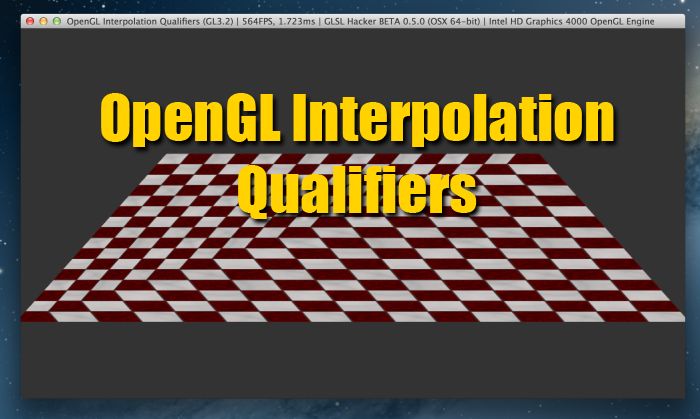
OpenGL 3 introduced three interpolation qualifiers that are at our disposal in the vertex and fragment shaders. These interpolation qualifiers allow to specify the way a vertex shader output is interpolated across a primitive. The OpenGL spec/wiki says:
- flat: the value is not interpolated. The value given to the fragment shader is the value from the Provoking Vertex for that primitive.
- smooth: performs a perspective correct interpolation.
- noperspective: performs a linear interpolation in window space.
The default interpolation qualifier is smooth when no qualifier is present.
Let’s see in practice how these qualifiers affect the rendering. I used GLSL Hacker to quickly code the demo and play with GLSL shaders. All demos of this tutorial are included in GLSL Hacker Code Sample Pack in theGLSL_OpenGL_32_Interpolation/ folder.
The first 3D test is simple: a quad with a different color at each vertex:
- vertex 0: red
- vertex 1: green
- vertex 2: blue
- vertex 3: yellow
- vertex 0: red
- vertex 1: green
- vertex 2: blue
- vertex 3: yellow
Here is the GPU program used to render the quad:
Vertex shader:
#version 150
in vec4 gxl3d_Position;
in vec4 gxl3d_Color;
uniform mat4 gxl3d_ModelViewProjectionMatrix;
//flat out vec4 VertexColor;
smooth out vec4 VertexColor;
//noperspective out vec4 VertexColor;
void main()
{
gl_Position = gxl3d_ModelViewProjectionMatrix * gxl3d_Position;
VertexColor = gxl3d_Color;
}
Pixel shader:
#version 150
//flat in vec4 VertexColor;
smooth in vec4 VertexColor;
//noperspective in vec4 VertexColor;
out vec4 Out_Color;
void main()
{
Out_Color = VertexColor;
}
With smooth qualifier, the rendering is:
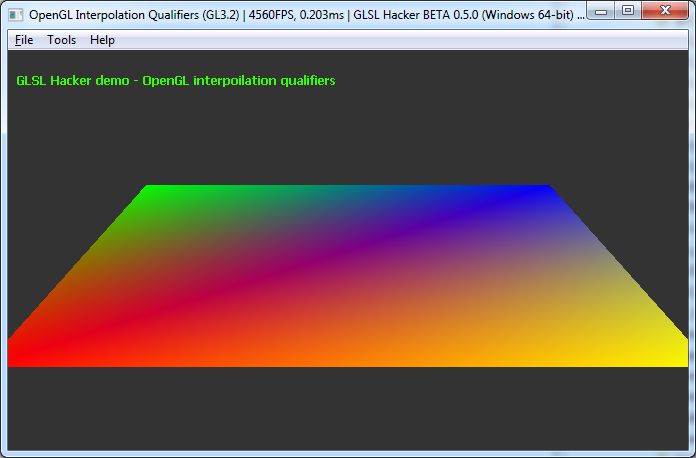
With flat qualifier, the rendering is:
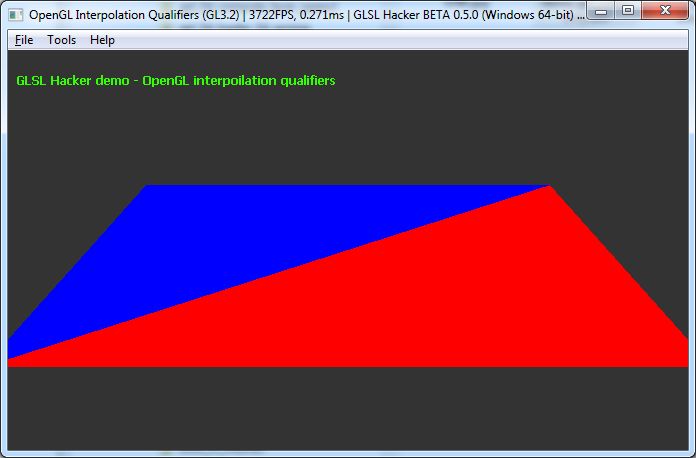
The flat qualifier disables the interpolation and each triangle of the quad is colored with the last triangle vertex color:
- triangle 0: vertices {0, 1, 2} – flat color is blue because vertex 2 is blue.
- triangle 1: vertices {2, 3, 0} – flat color is red because vertex 0 is red.
Why the last vertex? Because of the Provoking vertex. By default, the provoking vertex is the last vertex of a primitive, in our case the last vertex of a triangle. See HERE for more details about the Provoking vertex.
With noperspective qualifier, the rendering is:
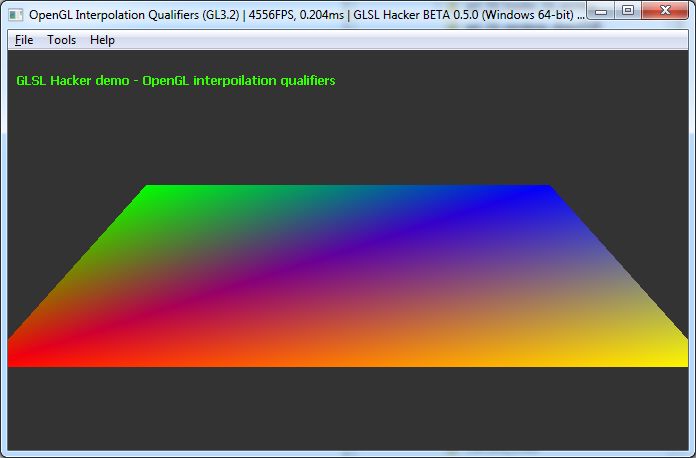
As you can see, the difference between noperspective and smooth is really small, only a sharp eye can see some subtle variations
Now the second test with a textured quad. Here is the GPU program with texture mapping:
Vertex shader:
#version 150
in vec4 gxl3d_Position;
in vec4 gxl3d_TexCoord0;
uniform mat4 gxl3d_ModelViewProjectionMatrix;
noperspective out vec4 VertexUV;
//smooth out vec4 VertexUV;
//flat out vec4 VertexUV;
void main()
{
gl_Position = gxl3d_ModelViewProjectionMatrix * gxl3d_Position;
VertexUV = gxl3d_TexCoord0 * 4;
}
Pixel shader:
#version 150
noperspective in vec4 VertexUV;
//smooth in vec4 VertexUV;
//flat in vec4 VertexUV;
uniform sampler2D tex0;
out vec4 Out_Color;
void main()
{
Out_Color = texture(tex0,VertexUV.xy);
}
With smooth qualifier, the rendering is:
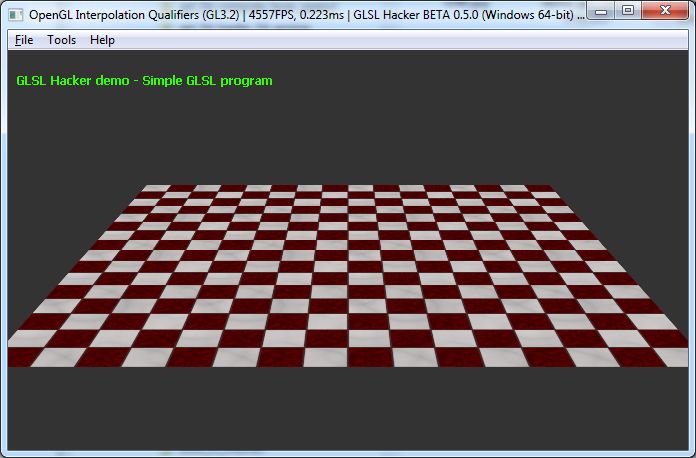
This is the usual rendering (the one we usually expect) and texture coordinates are interpolated with perspective correction.
With flat qualifier, the rendering is:
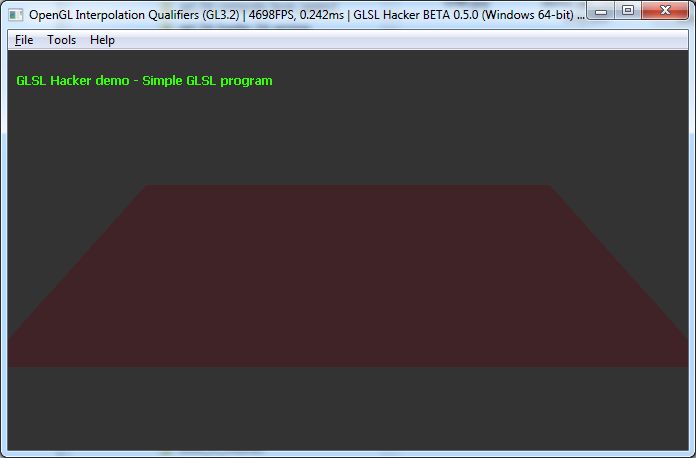
The texture color at vertex 2 and vertex 0 is red that’s why the quad is uniformly red (not a real red but RGB:{0.25; 0; 0}). Other way to explain: texture color at provoking vertices is RGB:{0.25; 0; 0}.
With noperspective qualifier, the rendering is:
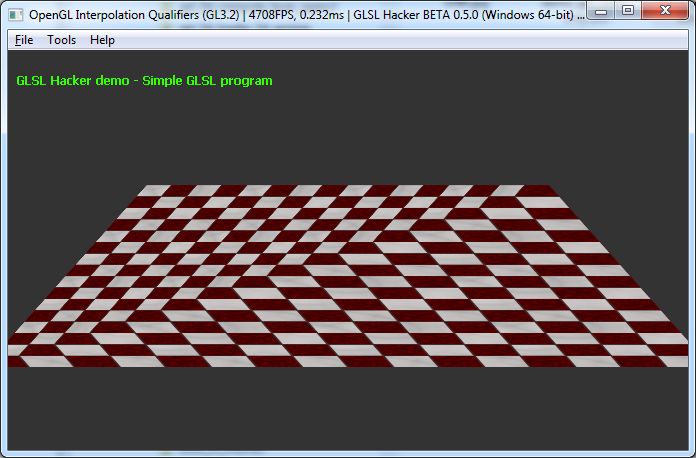
With the noperspective qualifier, texture coordinates are linearly interpolated in the screen space (or window space) and we clearly see each triangle.
Last thing: interpolation qualifiers in vertex and pixel shaders must match. If interpolation qualifiers mismatch like in the following example:
Vertex shader:
... smooth out vec vertex_color; ...
Pixel shader:
... flat in vec vertex_color; ...
you will get some weird results. On Windows + GTX 660, I got a black quad:
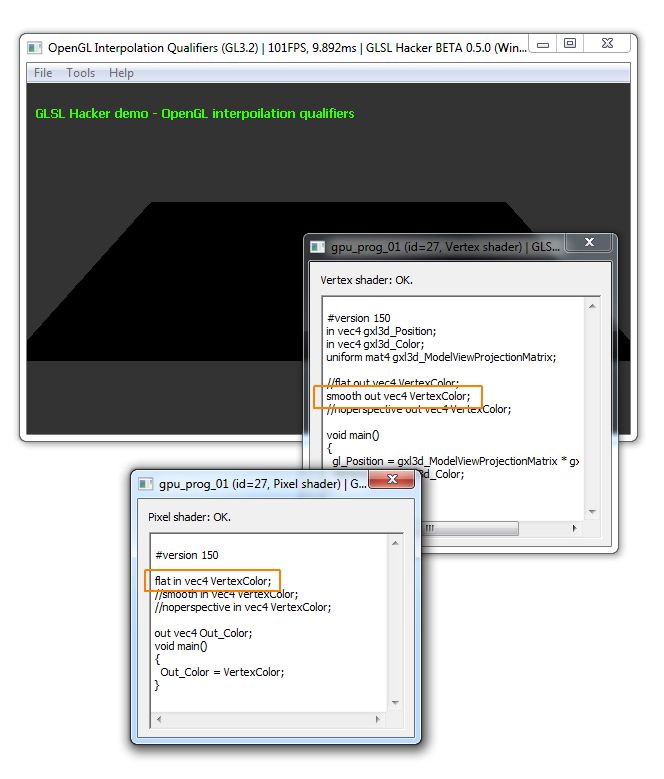
Under Mac OS X with the Intel HD 4000 GPU, the quand was simply not displayed:
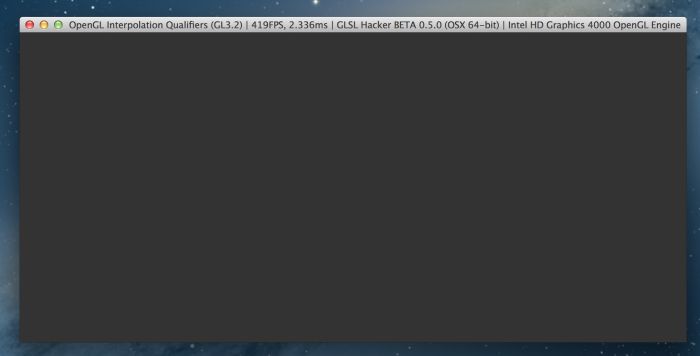
Game Developer Leegoon copyright all right reserved since 2010.


Comments
Post a Comment
덧글쓰기 기능 있는거 아시죠? ㅋㅋ